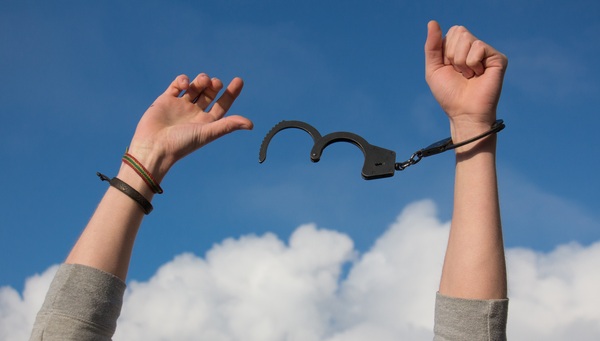
What Are The 7 Steps That Lead To Addiction?
What are the 7 steps that lead to addiction? We look at the cycle which happens when someone gets caught in the process of becoming addicted to a substance or activity.
What is addiction
Addiction is a deep, recurring state of continued engagement with substances or behavior despite the negative consequences that have occurred.
Addiction does not happen overnight, but over time, it results from an individual’s behaviors, thoughts, and body’s natural chemistry.
Once addiction takes hold, the body becomes dependent on certain substances (or behaviors) to function normally. The resulting cycle of events produces physical and psychological dependence on the two aspects of addiction.

As substance use persists over time, neurotransmitters in the brain are altered by the continued presence of these addictive substances, changing how one experiences pleasure, rewards, and stress.
As these and other physical changes continue, the cycle of addiction may develop and can cause an individual to become dependent on the psychological effects of their substance of choice.
Addiction differs for everyone; its symptoms can range from mild to severe. However, almost everyone goes through a seven cycle of addiction, as outlined below.
The 7 Stages of Addiction
Looking at the steps that lead to addiction can help you recognise if you or someone that you know is developing a problem.
Stages of Addiction 1: Intiatiaon
In the first stage of addiction, a person usually begins with a certain thought or belief that the substance or behavior is good for them.
This can be expressed as “better than nothing,” “safe,” “no risk,” etc. The initial attraction is not a conscious decision to use but a reaction influenced by their environment.
They may also be due to peer pressure and curiosity to try it out because they don’t know what it is. However, they become dependent as they use more of it over time.
Although this stage can happen at any age, the National Institute on Drug Abuse (NIDA) has identified the risk groups with the highest chance of developing addiction, including early-onset (18-20 years), unemployed, injection drug users, and those with mental health problems.
Stages of Addiction 2: Experimentation
As a person continues to use the substance or engage in the behavior, they experience positive feelings despite the risks and negative consequences that may occur.
This can be described as a honeymoon period, where the individual does not feel any negative effects from use.
In this stage, there are still no cravings for the substance or behavior since the individual can still control consumption.
There is no dependency in this stage; the individual can abstain easily, although the substance or behavior may tempt them.
This is where people usually start experimenting with substances, especially since teens and young adults are more likely to try new things or engage in new behaviors.
Stages of Addiction 3: Regular Use
The individual will start to use the substance or participate in the behavior regularly and persistently.
In this stage, there is a noticeable negative impact on their lives because of substance or behavior use.
Symptoms such as slurred speech, dependency on the substance or negative behaviors, and social or job loss may also develop during this stage.
The individual may also become preoccupied with the substance or behavior to the point where it takes over their life.
Since the individual may encounter cravings for the substance or behavior, he or she may begin to use more of it.
This can lead to dependency and the need for more substance or behavior. It is difficult to control consumption during this stage, although not impossible, since the individual may feel compelled to use it.
Stages of Addiction 4: Risky Use
Risky use occurs when the individual uses more of the substance or engages in the behavior than what is reasonable for a person to take.
Although they may still control it to some extent, they are vulnerable and more likely to consume more than necessary or engage in risky behavior.
It can also lead them back into earlier stages of addiction when they go through withdrawal symptoms.
In this stage, many individuals may be arrested for driving under the influence(DUI), driving while intoxicated (DWI), or other substance use.
They may also have problems with their finances and have difficulty maintaining or getting a job.
Stages of Addiction 5: Dependence
In this stage, the individual becomes dependent on the substance or behavior and cannot stop using it.
Because of their body’s natural addiction, they may experience withdrawal symptoms if they cannot consume it anymore. The individual is less likely to be in control of consumption; they may be unable to stop even if they want to.
This is a severe stage of addiction, where the person may spend most of their time and money just trying to get more of the substance or behavior.
Their entire world becomes consumed by it. This is the stage where many individuals ignore seeking help and continue using it.
In this stage, when an individual stops using the substance or engages in the behavior, they experience withdrawal symptoms.
These can include moodiness, irritability, nausea, dizziness, fatigue, and insomnia. These can be pronounced depending on the substance or behavior and the extent of use.
They may also have problems controlling their emotions when they no longer use the substance or engage in behaviors. They may also experience cravings for things that remind them of their addiction.
Stages of Addiction 6: Addiction
When an individual continues using the substance or engaging in the behavior even though it leads to severe problems, they are considered addicted.
In this stage, they may also need more and more of the substance or engage in behaviors to feel normal.
Their pattern will not be consistent with how they began because they feel compelled to use it. This can lead to physical dependence on the substance or behavior, expressed as withdrawal symptoms.
In this stage, they may spend most of their money, time, and energy on the substance or behavior.
During this stage, users tend to isolate themselves from family and friends due to the negative effects of a substance or behavioral use. They may face legal problems and possibly be homeless because of their addiction.
Stages of Addiction 7: Crisis Treatment
This stage occurs when the individual can no longer control their use and are constantly in crisis because of their addiction.
The individual will be in extreme distress at this point and may even need emergency treatment. Many individuals may go back to stage one, seeking help or trying to stop their substance or behavioral use.
However, if they cannot get treatment, they will repeatedly continue going through stages six and seven. In this stage, people are more likely to die from the substance or behavior than from anything else.
Most individuals may be taken to rehabilitation centers where they can get their needed help. This stage is also the only way to break the cycle of addiction and stop going through stages.
We hope this article was able to answer your questions about: What Are The 7 Steps That Lead To Addiction?
If you want to discover more information about addiction, follow the link to our other pages on this topic.



